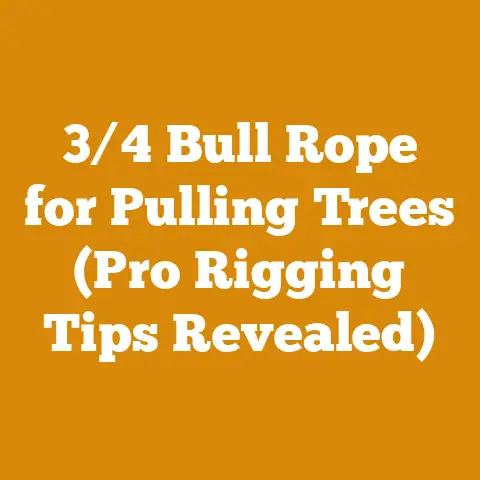Chainsaw Raker Gauge DIY (Pro Tips for Sharpening Precision)
I love the feel of a freshly sharpened chainsaw chain. The aggressive bite of the cutters, the smooth glide through wood – it’s a symphony of textures and sensations that only a seasoned woodworker or logger can truly appreciate. But a truly exceptional chain isn’t just about sharp cutters; it’s about the precision of the rakers, also known as depth gauges. These small but crucial elements determine how much wood each cutter takes with every pass. And that’s where the art of raker gauge adjustment comes in.
Understanding Rakers: The Key to Efficient Cutting
Rakers, or depth gauges, sit in front of each cutter on your chainsaw chain. Their purpose is to control the depth of cut, preventing the cutters from biting too aggressively and bogging down the saw. When the rakers are properly adjusted, the cutters take the optimal amount of wood, resulting in smooth, efficient cutting.
If the rakers are too high (not filed down enough), the cutters won’t be able to dig in properly, leading to slow cutting and excessive vibration. Conversely, if the rakers are too low (filed down too much), the cutters will take too large of a bite, causing the saw to buck, kickback, and potentially damage the chain or even the saw itself.
My personal experience: I once spent a whole day felling trees with a poorly adjusted chain. The saw was constantly bogging down, and I was exhausted by the end of it. It wasn’t until I took the time to properly adjust the rakers that I realized how much of a difference it made. The saw cut through wood like butter, and I was able to work much more efficiently.
Why Raker Gauge Adjustment Matters
- Improved Cutting Performance: Properly adjusted rakers allow your chainsaw to cut smoothly and efficiently, reducing cutting time and minimizing strain on the engine.
- Reduced Kickback Risk: Incorrect raker height is a major contributor to chainsaw kickback, a dangerous event that can cause serious injury.
- Extended Chain Life: When rakers are properly adjusted, the cutters work more efficiently, reducing wear and tear on the chain and extending its lifespan.
- Enhanced Safety: A well-maintained chainsaw is a safer chainsaw. Proper raker adjustment contributes to overall chainsaw safety.
- Fuel Efficiency: When your saw cuts efficiently, it consumes less fuel, saving you money and reducing your environmental impact.
Tools and Materials You’ll Need
- Chainsaw Raker Gauge: This specialized tool is essential for accurately measuring and adjusting raker height. I recommend investing in a quality gauge for consistent results.
- Flat File: A flat file is used to remove material from the rakers. Choose a file with a smooth, even surface for precise filing.
- File Guide (Optional): A file guide helps maintain the correct filing angle and ensures consistent raker height.
- Depth Gauge Joiner/Shaper (Optional): This tool is used to shape the rakers after filing, ensuring they have a smooth, rounded profile.
- Vise: A vise is helpful for securely holding the chainsaw chain while you work.
- Safety Glasses: Always wear safety glasses to protect your eyes from flying debris.
- Gloves: Gloves provide a better grip and protect your hands from sharp edges.
- Marker or Pen: For marking rakers before filing.
My Tool Preference: I personally prefer using a combination of a high-quality Oregon raker gauge and a Pferd flat file. I’ve found that this combination provides the best balance of accuracy, durability, and ease of use.
Understanding Chainsaw Chain Types and Raker Settings
Different chainsaw chain types require different raker settings. The recommended raker height is typically indicated on the chain packaging or in the chainsaw’s owner’s manual. Here’s a general overview of common chain types and their corresponding raker settings:
- Full Chisel Chain: This type of chain has square-cornered cutters that are highly aggressive and require a slightly lower raker setting (typically around 0.025″ – 0.030″). It’s best suited for experienced users and clean wood.
- Semi-Chisel Chain: Semi-chisel chains have rounded cutters that are more forgiving and less prone to kickback. They require a slightly higher raker setting (typically around 0.030″ – 0.035″). This chain is a good all-around choice for various cutting conditions.
- Low-Kickback Chain: These chains are designed with safety in mind and feature ramped or bumper-style rakers that reduce the risk of kickback. They generally require a higher raker setting (typically around 0.035″ – 0.040″).
- Micro-Lite Chain: These chains have a narrow kerf and require less power to operate. They typically have lower raker settings than other chain types.
Important Note: Always consult your chainsaw’s owner’s manual or the chain packaging for the specific recommended raker setting for your chain type. Using the wrong raker setting can negatively impact cutting performance and safety.
Step-by-Step Guide to Chainsaw Raker Gauge Adjustment
Here’s a detailed, step-by-step guide to adjusting your chainsaw’s raker gauges:
-
Secure the Chain: Place the chainsaw chain in a vise or secure it to a stable surface. This will prevent the chain from moving while you work.
-
Clean the Chain: Use a brush or compressed air to remove any dirt, debris, or sawdust from the chain. This will help you see the rakers clearly and ensure accurate measurements.
-
Identify the Rakers: The rakers are the small, curved or flat pieces of metal located in front of each cutter.
-
Set the Raker Gauge: Place the raker gauge on the chain, aligning the appropriate setting (based on your chain type) with the raker you’re measuring. The gauge should sit flush against the cutters on either side of the raker.
-
Check the Raker Height: Look closely at the raker. If the raker extends above the gauge, it needs to be filed down. If it’s level with or below the gauge, it’s already at the correct height.
-
Mark the Rakers (Optional): If you’re filing multiple rakers, you can use a marker or pen to mark the ones that need to be filed. This will help you keep track of your progress.
-
File the Rakers: Using a flat file, carefully file down the rakers that extend above the gauge. Hold the file at a consistent angle and use smooth, even strokes. Avoid filing too much material at once.
-
Shape the Rakers (Optional): After filing, you can use a depth gauge joiner/shaper to round off the edges of the rakers. This will help prevent them from snagging on the wood and improve cutting performance.
-
Repeat for All Rakers: Repeat steps 4-8 for all the rakers on the chain, ensuring that each one is properly adjusted to the correct height.
-
Inspect Your Work: Once you’ve finished filing all the rakers, carefully inspect your work to ensure that each one is at the correct height and has a smooth, consistent shape.
-
Test the Chain: After adjusting the rakers, test the chain on a piece of wood. The saw should cut smoothly and efficiently, without bogging down or kicking back.
Pro Tip: I like to file the rakers in a slight downward slope from the front to the back. This helps to prevent the rakers from digging into the wood and causing the saw to buck.
DIY Raker Gauge Options
While a commercially available raker gauge is the most accurate and convenient option, you can also create your own DIY gauge using readily available materials. Here are a couple of options:
Option 1: Using Metal Shims
- Gather Materials: You’ll need a few metal shims of varying thicknesses, a ruler or caliper, a file, and a marker.
- Measure and Cut: Determine the desired raker height for your chain type (e.g., 0.030″). Use the ruler or caliper to measure and cut a shim to that thickness.
- Create the Gauge: File the edges of the shim to create a smooth, flat surface. This will be the base of your gauge.
- Mark the Gauge: Use a marker to clearly label the gauge with the corresponding raker height (e.g., “0.030”).
- Use the Gauge: Place the gauge on the chain, aligning it with the cutters on either side of the raker. Check the raker height as described in the step-by-step guide above.
Option 2: Using Cardboard or Plastic
- Gather Materials: You’ll need a piece of thick cardboard or plastic, a ruler or caliper, a sharp knife or scissors, and a marker.
- Measure and Cut: Determine the desired raker height for your chain type. Use the ruler or caliper to measure and cut the cardboard or plastic to that thickness. You may need to layer multiple pieces to achieve the desired thickness.
- Create the Gauge: Carefully cut out a small rectangle from the cardboard or plastic. This will be the base of your gauge.
- Mark the Gauge: Use a marker to clearly label the gauge with the corresponding raker height.
- Use the Gauge: Place the gauge on the chain, aligning it with the cutters on either side of the raker. Check the raker height as described in the step-by-step guide above.
Important Note: DIY raker gauges are not as accurate as commercially available gauges. Use them with caution and always double-check your work.
Advanced Sharpening Techniques and Raker Adjustment
Raker adjustment is an integral part of the overall chainsaw sharpening process. Here are some advanced techniques to consider:
- Maintain Consistent Cutter Length: As you sharpen your cutters, they will gradually become shorter. It’s important to maintain a consistent cutter length across the entire chain. This will ensure that all the cutters are working equally and that the rakers are properly positioned.
- Adjust Rakers After Multiple Sharpenings: As the cutters become shorter, the rakers will effectively become higher. It’s generally recommended to adjust the rakers after every 3-5 sharpenings, or whenever you notice a decrease in cutting performance.
- Consider Different Raker Shapes: Some users prefer to experiment with different raker shapes to optimize cutting performance for specific wood types or cutting conditions. For example, a more rounded raker shape may be better suited for cutting softwoods, while a flatter raker shape may be better suited for cutting hardwoods.
- Use a Depth Gauge Grinder: For high-volume sharpening, a depth gauge grinder can significantly speed up the raker adjustment process. These machines use a grinding wheel to quickly and accurately remove material from the rakers.
My Sharpening Routine: I typically sharpen my chainsaw chain after every few hours of use, or whenever I notice a decrease in cutting performance. I use a chainsaw sharpening kit with a file guide to ensure consistent cutter angles. I adjust the rakers after every 4-5 sharpenings, or whenever I feel like the chain is not cutting as efficiently as it should.
Common Mistakes to Avoid
- Filing Rakers Too Low: Filing the rakers too low is a common mistake that can lead to aggressive cutting, kickback, and chain damage. Always use a raker gauge to ensure accurate adjustment.
- Filing Rakers Unevenly: Filing the rakers unevenly can cause the saw to cut crookedly and increase the risk of kickback. Pay close attention to detail and ensure that all the rakers are at the same height.
- Using the Wrong Raker Setting: Using the wrong raker setting for your chain type can negatively impact cutting performance and safety. Always consult your chainsaw’s owner’s manual or the chain packaging for the specific recommended raker setting.
- Ignoring Raker Adjustment: Neglecting to adjust the rakers can significantly reduce cutting performance and increase the risk of kickback. Make raker adjustment a regular part of your chainsaw maintenance routine.
- Not Wearing Safety Gear: Always wear safety glasses and gloves when sharpening your chainsaw. Flying debris can cause serious eye injuries, and sharp edges can cut your hands.
Safety Considerations
- Always Wear Safety Glasses: Protect your eyes from flying debris when sharpening your chainsaw.
- Wear Gloves: Gloves provide a better grip and protect your hands from sharp edges.
- Work in a Well-Lit Area: Ensure that you have adequate lighting to see the chain clearly and avoid mistakes.
- Secure the Chain: Properly secure the chain in a vise or on a stable surface to prevent it from moving while you work.
- Use Caution When Filing: Be careful when filing the rakers to avoid cutting yourself or damaging the chain.
- Inspect the Chain Regularly: Regularly inspect the chain for any signs of damage or wear. Replace the chain if it is damaged or worn beyond safe limits.
- Follow Manufacturer’s Instructions: Always follow the manufacturer’s instructions for sharpening and maintaining your chainsaw.
Troubleshooting Cutting Problems
If you’re experiencing cutting problems with your chainsaw, here are some troubleshooting tips:
- Saw Bogs Down: If the saw bogs down while cutting, the rakers may be too high. Try filing them down slightly and testing the chain again.
- Saw Cuts Slowly: If the saw cuts slowly, the cutters may be dull or the rakers may be too high. Sharpen the cutters and adjust the rakers as needed.
- Saw Kicks Back: If the saw kicks back, the rakers may be too low or the cutters may be too aggressive. Check the raker height and adjust as needed.
- Saw Cuts Crookedly: If the saw cuts crookedly, the cutters may be unevenly sharpened or the rakers may be unevenly adjusted. Inspect the chain and correct any imbalances.
- Chain Vibrates Excessively: If the chain vibrates excessively, the cutters may be damaged or the chain may be improperly tensioned. Inspect the chain and adjust the tension as needed.
Case Studies: Real-World Examples
Case Study 1: Improving Cutting Performance in Hardwood Logging
A logging company in the Pacific Northwest was experiencing slow cutting times and excessive fuel consumption when felling large hardwood trees. After analyzing the problem, they discovered that the rakers on their chainsaw chains were not properly adjusted for the dense hardwood. By lowering the raker height slightly (to around 0.028″), they were able to significantly improve cutting performance and reduce fuel consumption. They also implemented a regular raker adjustment schedule to maintain optimal cutting efficiency.
The Future of Chainsaw Sharpening and Raker Adjustment
The technology behind chainsaw sharpening and raker adjustment is constantly evolving. Here are some emerging trends to watch:
- Automated Sharpening Systems: Automated chainsaw sharpening systems are becoming increasingly popular, offering precise and consistent sharpening with minimal user input.
- Advanced Raker Gauges: New raker gauges are incorporating digital displays and laser technology for even greater accuracy and ease of use.
- Self-Sharpening Chains: Some manufacturers are developing self-sharpening chainsaw chains that automatically sharpen the cutters while the saw is running.
- AI-Powered Sharpening: Artificial intelligence is being used to develop sharpening systems that can automatically detect the condition of the chain and adjust the sharpening parameters accordingly.
Conclusion: Mastering the Art of Precision
Mastering the art of chainsaw raker gauge adjustment is essential for achieving optimal cutting performance, extending chain life, and enhancing safety. By understanding the principles behind raker adjustment, using the right tools and techniques, and following a regular maintenance schedule, you can ensure that your chainsaw is always performing at its best. So, get out there, grab your tools, and start honing your skills. The feel of a perfectly sharpened and adjusted chain is a reward in itself. Remember, precision is key!
Next Steps
- Review your chainsaw’s owner’s manual for specific raker setting recommendations.
- Purchase a quality raker gauge and flat file.
- Practice adjusting the rakers on an old chain before working on your primary chain.
- Develop a regular sharpening and raker adjustment schedule.
- Always prioritize safety when working with chainsaws and sharpening tools.






